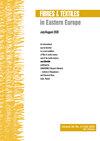Comparative Advantage of Yarn and Weaving Industries: Evidence for Türkiye and Top Exporters
IF 0.9
4区 工程技术
Q3 MATERIALS SCIENCE, TEXTILES
引用次数: 0
Abstract
Abstract With the repeal of the MFA agreement, the competitive conditions in yarn and weaving industries have changed. Especially, with the cheap labour of Asian and Far Eastern countries, they have become advantageous in this unrestricted competition environment. Therefore, this study was conducted to help to identify those products where Türkiye and her competitors have comparative advantages. This study mainly focuses on analysing the complementarity and substitutability of selected countries such as Türkiye, India, China and the USA. RTA, RC, RSCA and trade specialisation (TSI) indices were used to evaluate the competitive advantage. The results showed that Türkiye’s competitiveness in cotton yarn and cotton weaving has deteriorated. However, India and China, which are the major countries in the world’s cotton production, have a positive impact on their long-term competitiveness. Moreover, for these countries there is convergence in cotton yarn and divergence in cotton fabric products.纱线和织造工业的比较优势:对日本工业和主要出口商的证据
摘要随着MFA协议的废除,纱线和纺织行业的竞争条件发生了变化。特别是亚洲和远东国家的廉价劳动力,使它们在这种不受限制的竞争环境中变得有利。因此,进行这项研究是为了帮助确定土耳其及其竞争对手具有比较优势的产品。本研究主要分析土耳其、印度、中国和美国等选定国家的互补性和可替代性。RTA、RC、RSCA和贸易专业化(TSI)指数用于评估竞争优势。结果显示,土耳其在棉纱和棉纺方面的竞争力有所下降。然而,作为世界棉花生产大国的印度和中国对其长期竞争力产生了积极影响。此外,对这些国家来说,在棉纱方面存在趋同,在棉布产品方面存在分歧。
本文章由计算机程序翻译,如有差异,请以英文原文为准。
求助全文
约1分钟内获得全文
求助全文
来源期刊

Fibres & Textiles in Eastern Europe
工程技术-材料科学:纺织
CiteScore
1.60
自引率
11.10%
发文量
12
审稿时长
13.5 months
期刊介绍:
FIBRES & TEXTILES in Eastern Europe is a peer reviewed bimonthly scientific journal devoted to current problems of fibre, textile and fibrous products’ science as well as general economic problems of textile industry worldwide. The content of the journal is available online as free open access.
FIBRES & TEXTILES in Eastern Europe constitutes a forum for the exchange of information and the establishment of mutual contact for cooperation between scientific centres, as well as between science and industry.
 求助内容:
求助内容: 应助结果提醒方式:
应助结果提醒方式:


